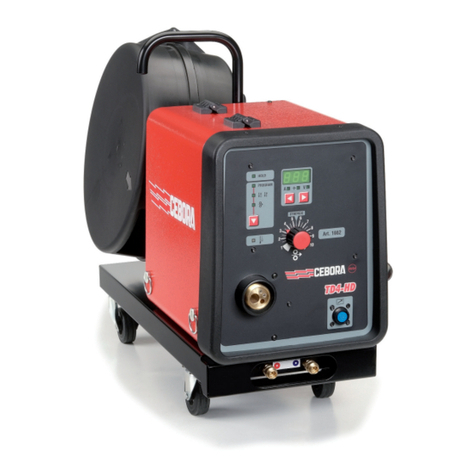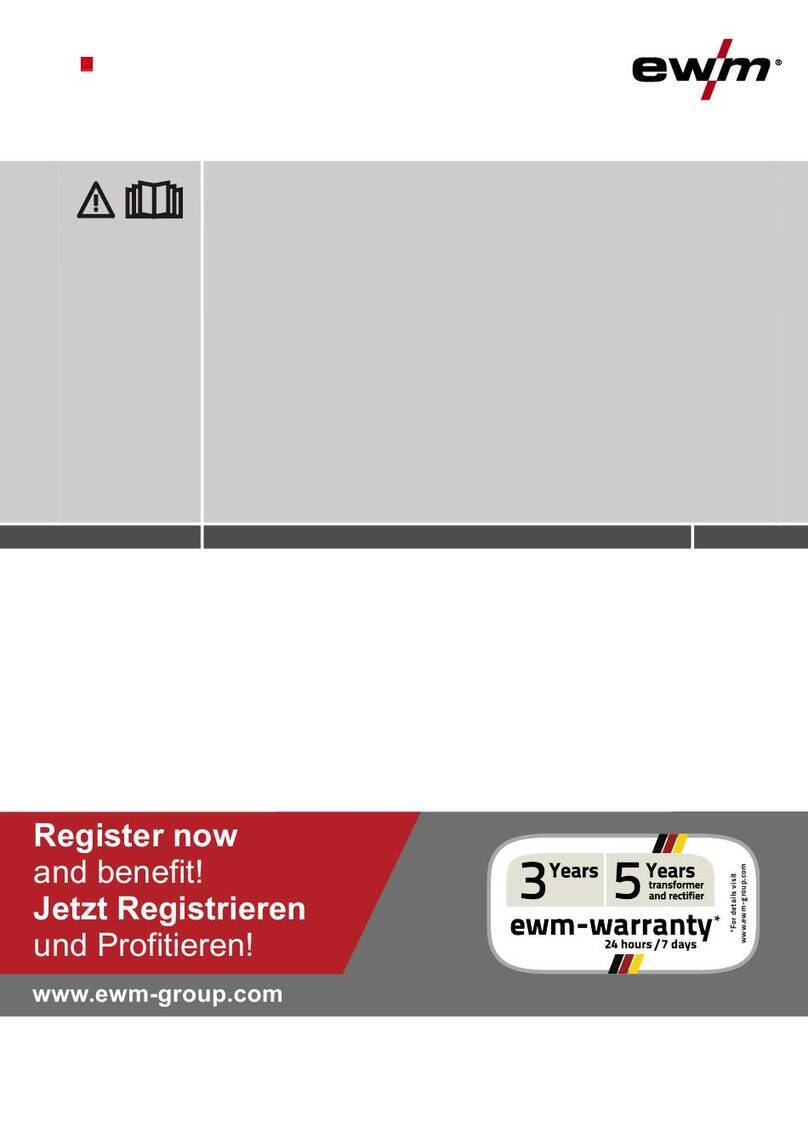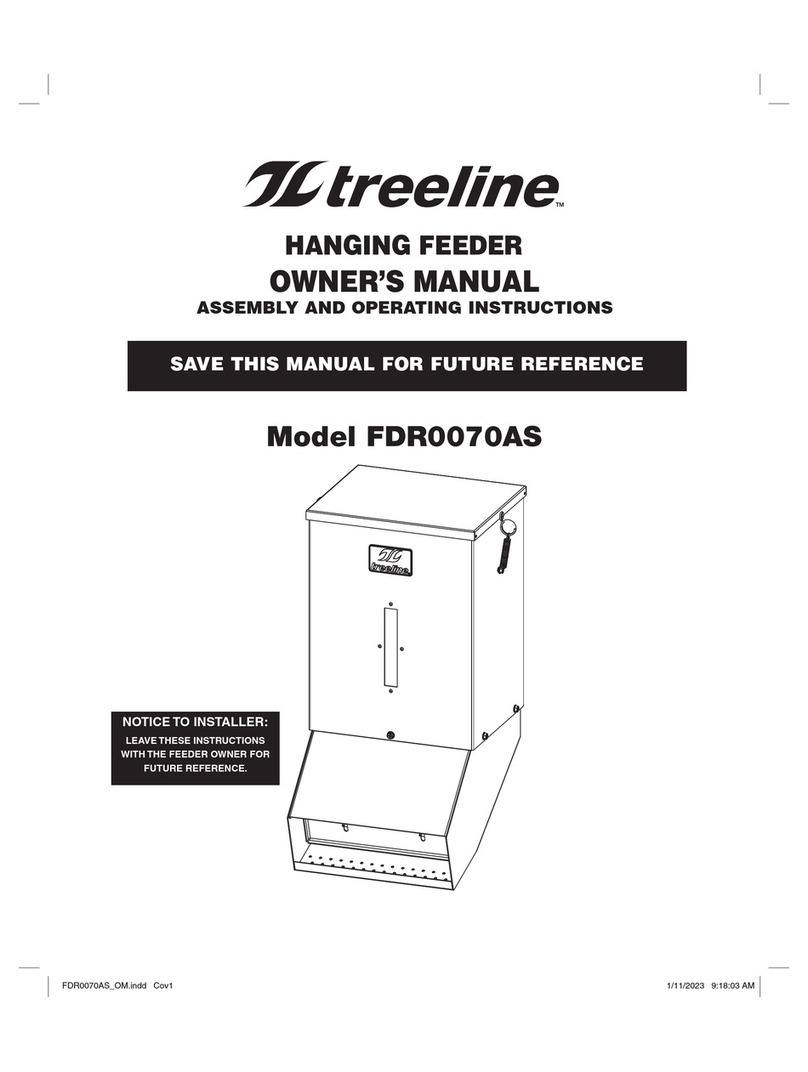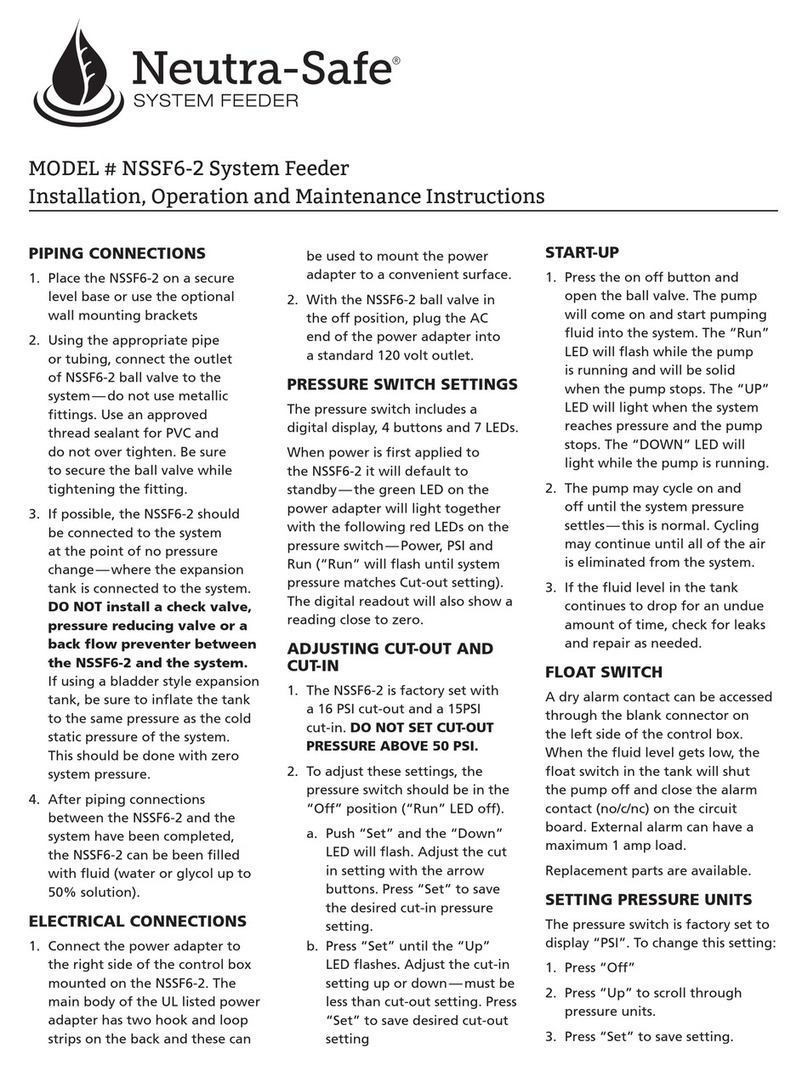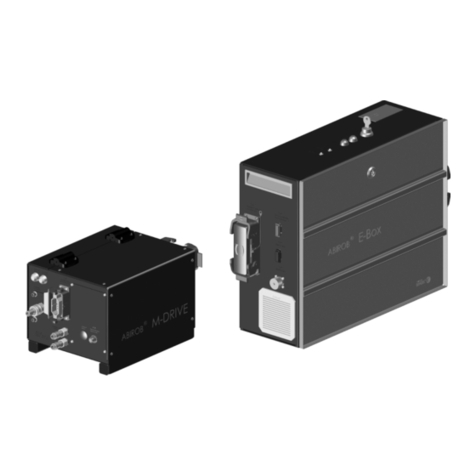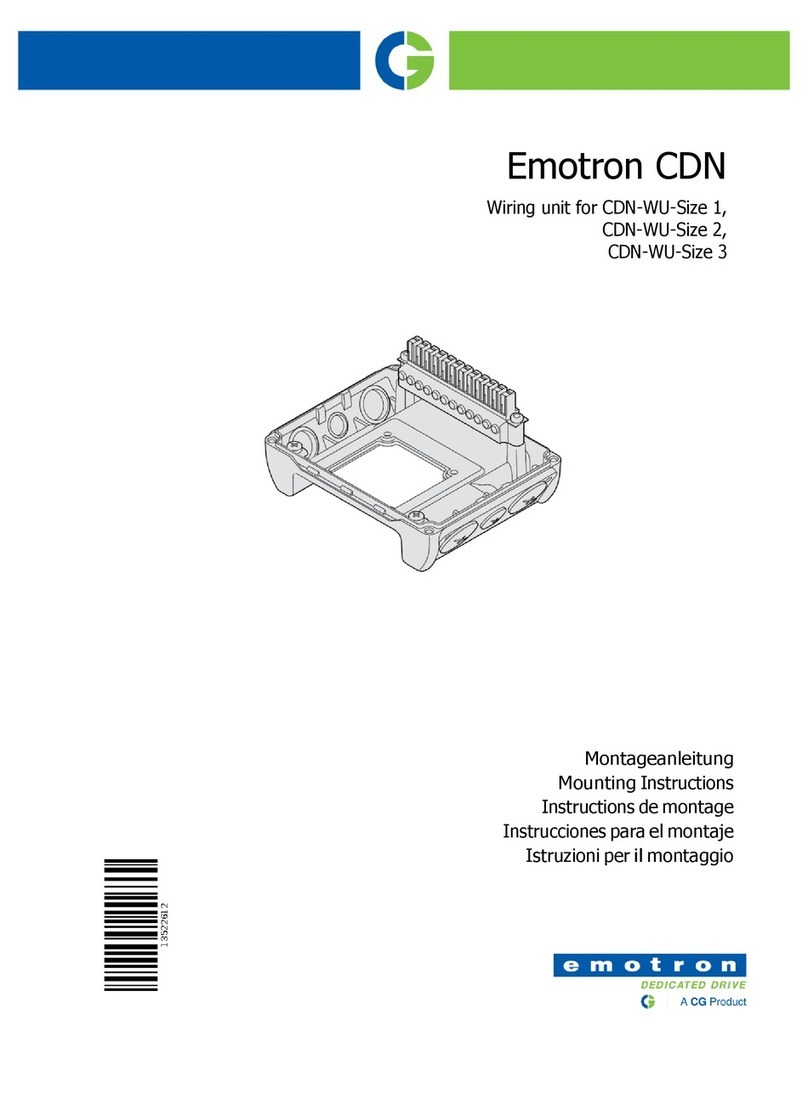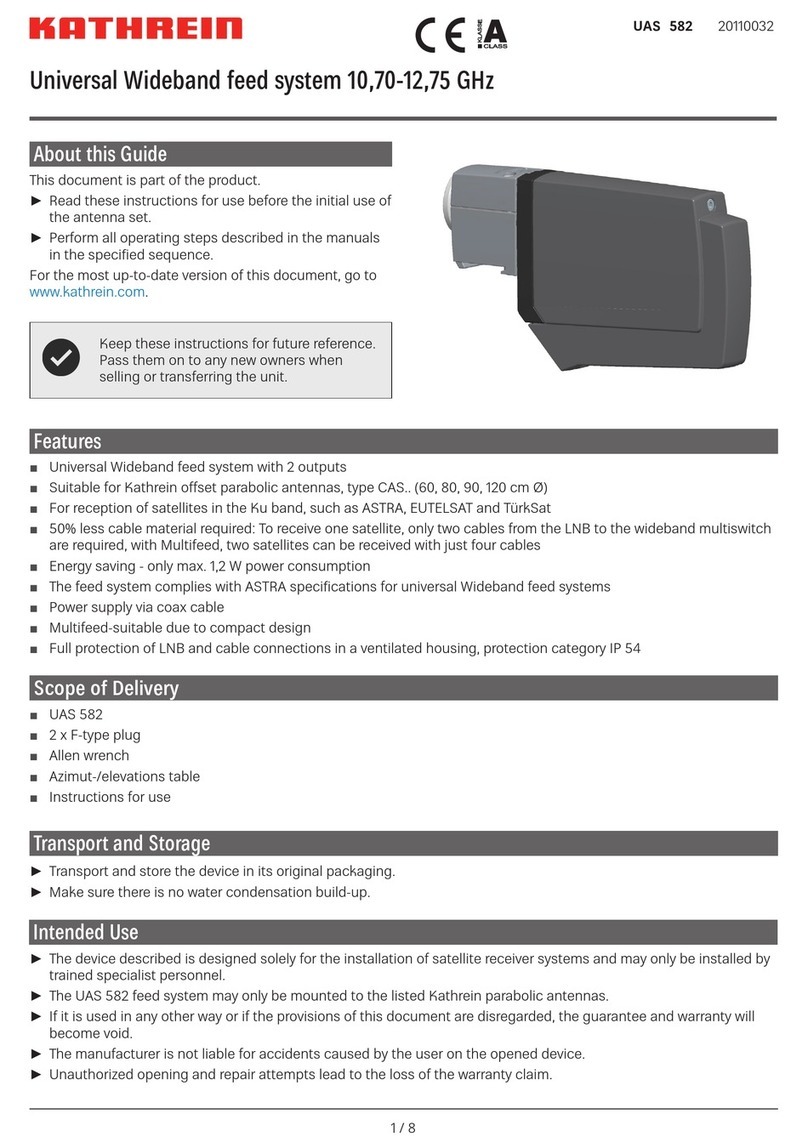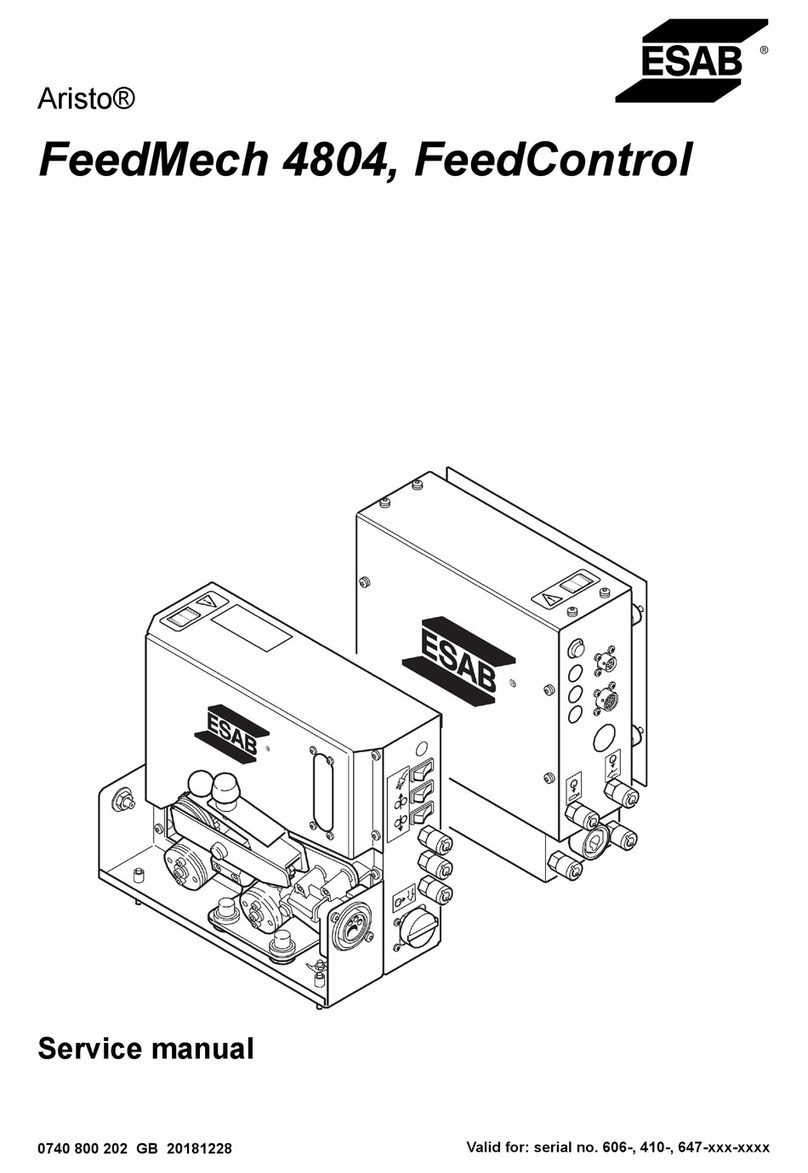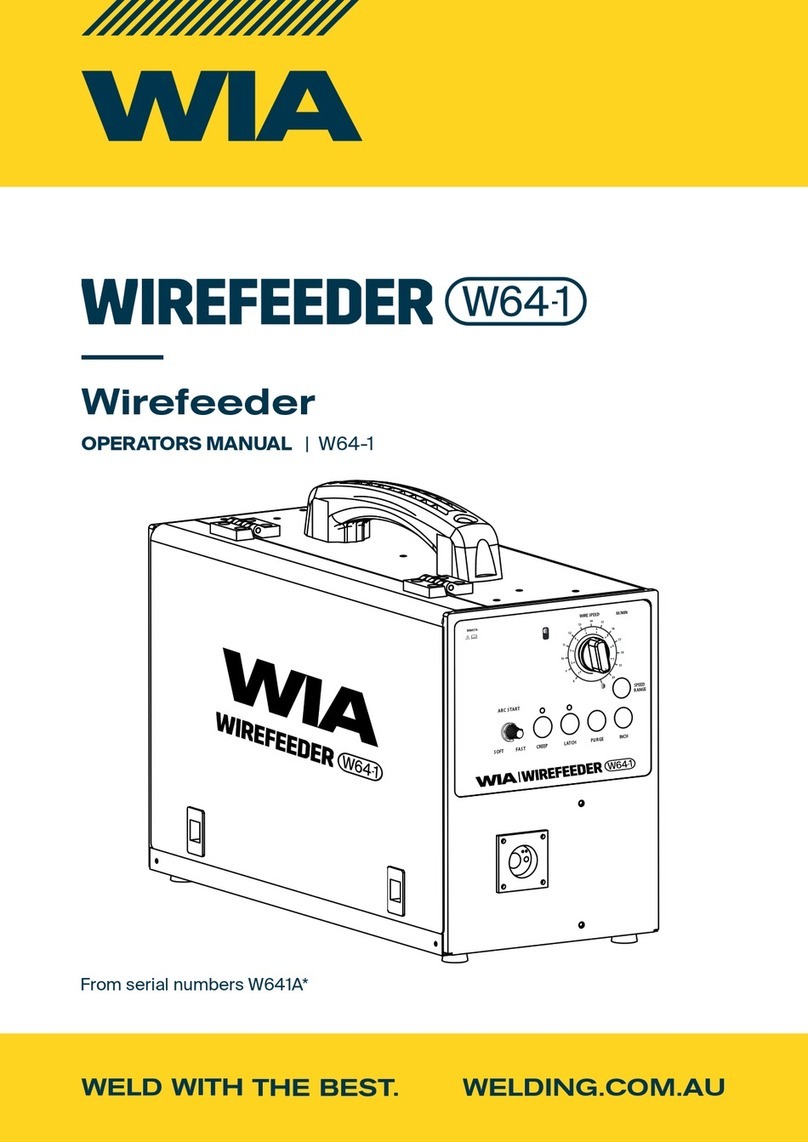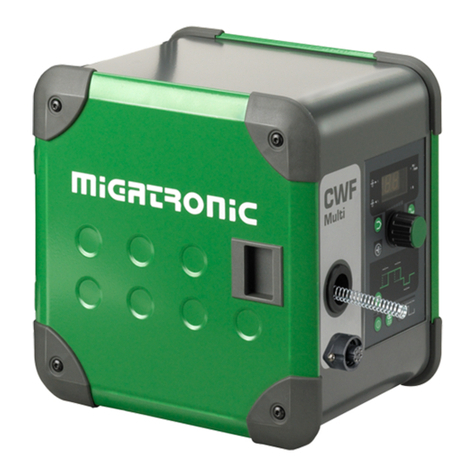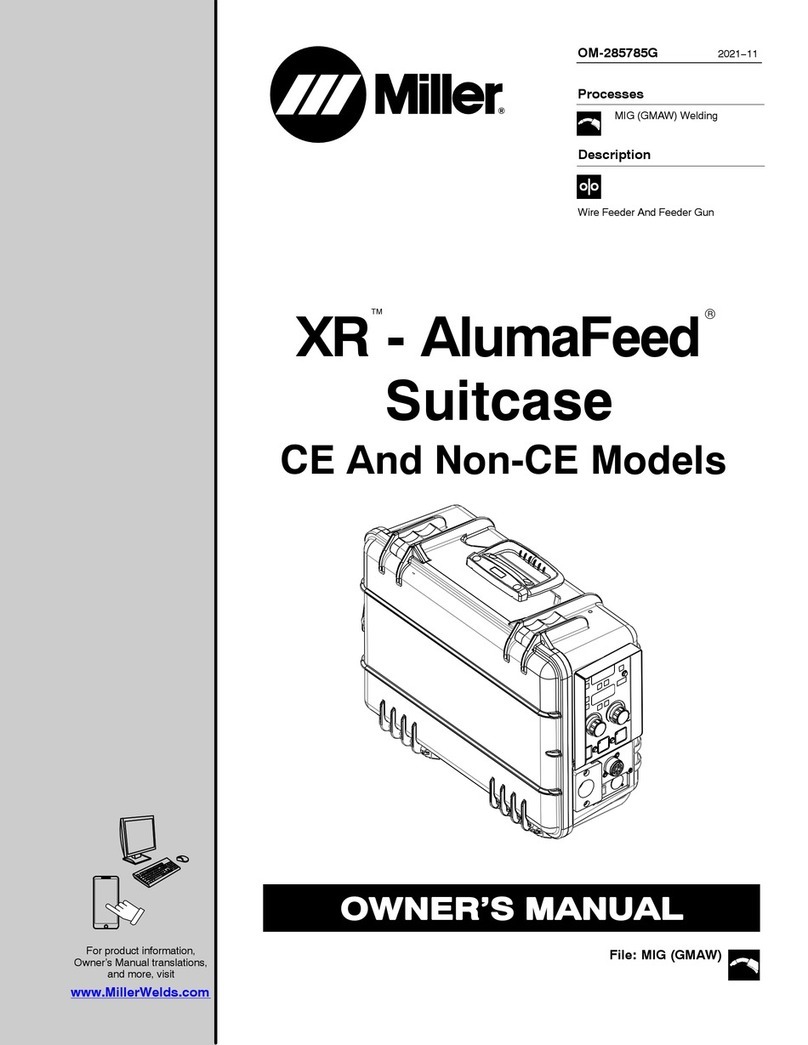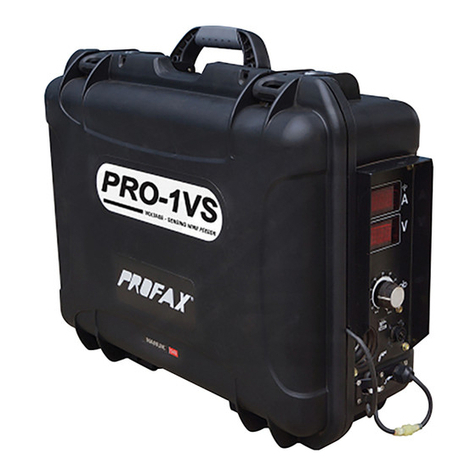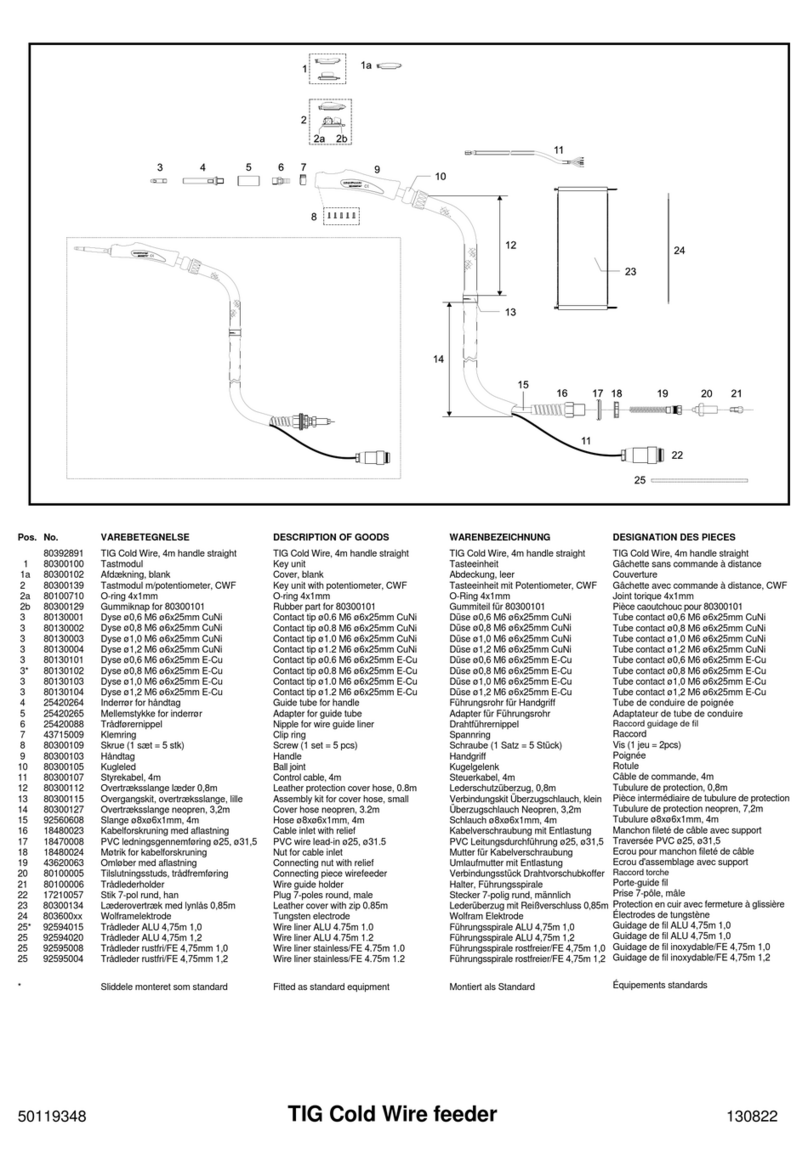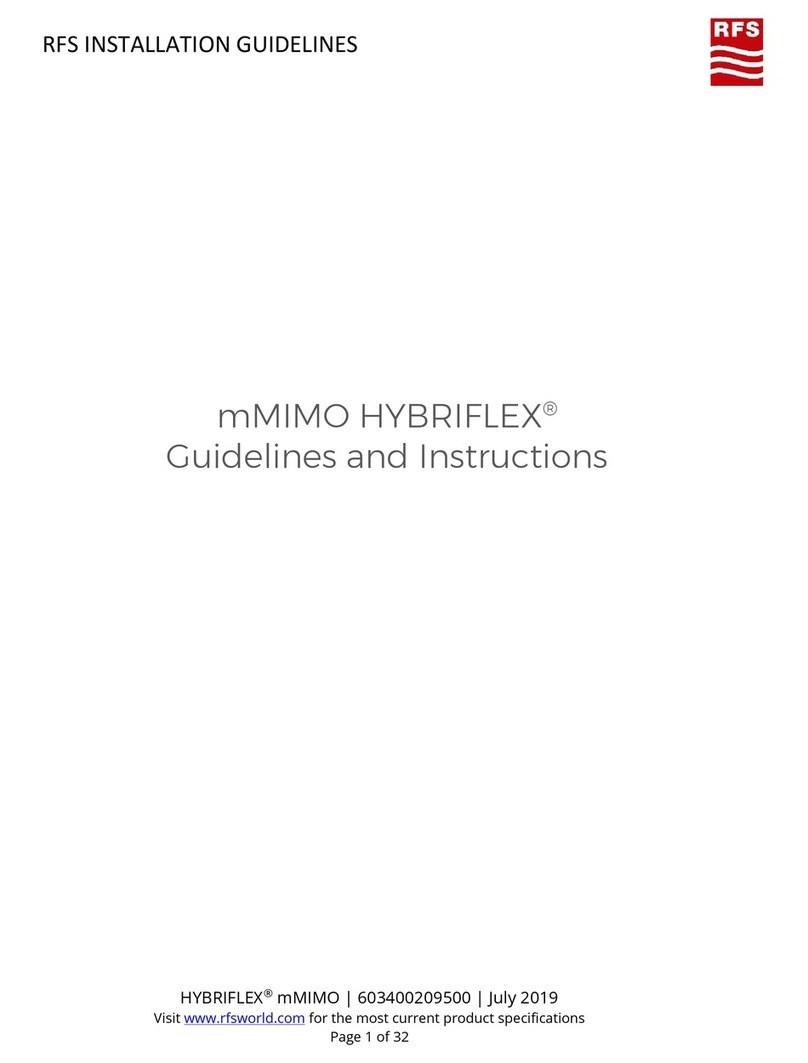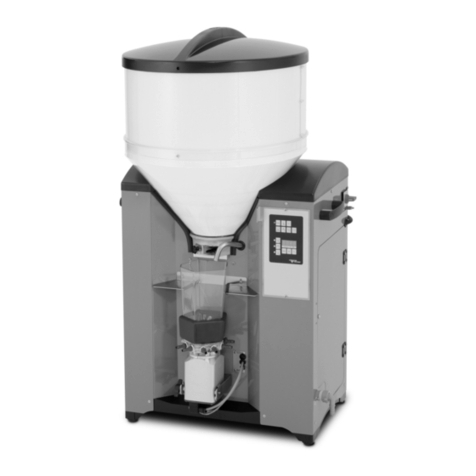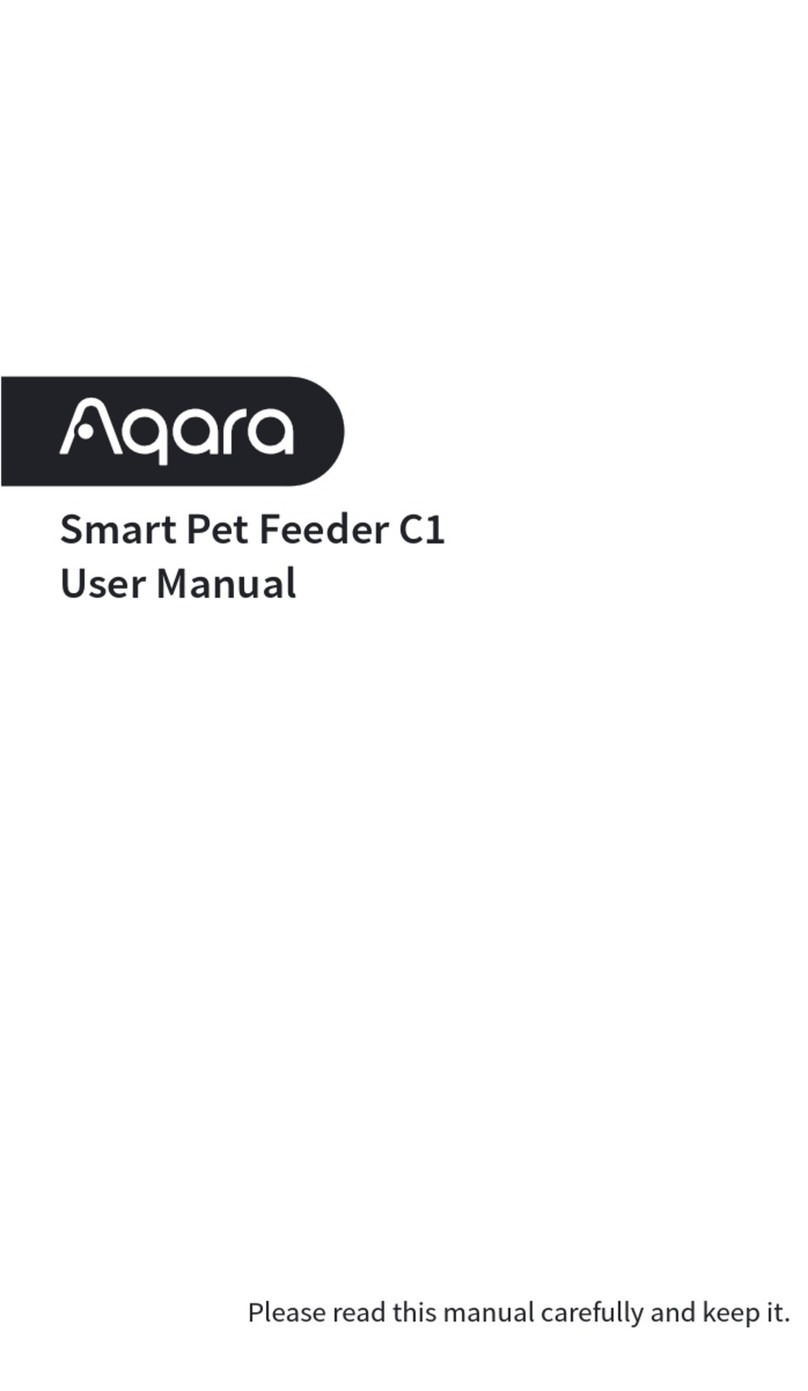
®
Pro Series Safety - Page iii
SAFETY CONSIDERATIONS
ELECTRIC ARC WELDING EQUIPMENT
CAUTION : READ BEFORE ATTEMPTING INSTALLATION, OPERATION
OR MAINTENANCE OF THIS EQUIPMENT
1-1 INTRODUCTION
This equipment is intended for ultimate
application by commercial/industrial
users and for operation by persons
trained and experienced in the use and
maintenance of welding equipment.
Operation should not be undertaken
without adequate training in the use of
such equipment. Training is available
from many public and private schools or
similar facilities.
Safe practices in the installation,
operation and maintenance of this
equipment requires proper training in
the art, a careful study of the information
provided with the equipment, and the
use of common sense. Rules for safe
use are generally provided by suppliers
of welding power sources, compressed
gas suppliers, and electrode suppliers.
Careful compliance with these ruleswill
promote safe use of thisequipment.
The following Safety Rules cover some
of the more generally found situations.
READ THEM CAREFULLY. In case of
any doubt, obtain qualified help before
proceeding.
1-2 GENERAL PRECAUTIONS
A. Burn Prevention
ELECTRICARCWELDINGPRODUCES
H IGH IN TENSITY H EAT AN D
ULTRAVIOLET RADIANT ENERGY
WHICH MAY CAUSE SERIOUS AND
PERMANENT EYE DAMAGE AND
WHICHMAYDAMAGEANYEXPOSED
SKIN AREAS.
Wear helmet with safety goggles or
glasses with side shields underneath,
appropriate filter lenses or plates
(protected by clear cover glass). This
is a must for welding or cutting (and
chipping)toprotecttheeyesfromradiant
energy and flying metal. Replace cover
glass when broken, pitted, or spattered.
Medical first aid and eye treatment.
First aid facilities and a qualified first aid
person should beavailable foreach shift
unless medical facilities are close by for
immediatetreatmentofflashburnsofthe
eyes and skin burns.
Wear protective clothing - leather (or
asbestos) gauntlet gloves, hat, and high
safety-toe shoes. Button shirt collarand
pocket flaps, and wear cuffless trousers
to avoid entry of sparks and slag.
Avoid oily or greasy clothing. A spark
may ignite them.
Flammable hair preparations should not
be used by persons intending to weld
or cut.
Hot metal such as electrode stubs and
work pieces should never be handled
without gloves.
Ear plugs should be worn when working
on overhead or in a confined space. A
hard hat should be worn when others
work overhead.
B. Toxic Fume Prevention
WARNING: The use of this product may
result in exposure to chemicals known
to the State ofCalifornia to cause cancer
and birth defects or other reproductive
harm.
Adequateventilation.Severediscomfort,
illness or death can result from fumes,
vapors, heat, or oxygen enrichment or
depletion that welding (or cutting) may
produce. Prevent them with adequate
ventilation. NEVER ventilate with
oxygen.
Lead-, cadmium-, zinc-, mercury-,
beryllium-bearing and similar materials,
when welded or cut, may produce
harmful concentrations of toxic fumes.
Adequate local exhaust ventilation must
be used, or each person in the area, as
well as the operator, must wear an air-
supplied respirator. For beryllium, both
must be used.
Metals coated with or containing
materials that emit toxic fumes should
notbeheated unless coatingis removed
form the work surface, the area is well
ventilated, or the operator wears anair-
supplied respirator.
Work in a confined space only while it is
being ventilated and, if necessary, while
wearing an air-supplied respirator.
Gas leaks in a confined space should be
avoided. Leaked gas in large quantities
can change oxygen concentration
dangerously. Do not bring gas cylinders
into a confined space.
Leaving confined space, shut OFF gas
supply at source to prevent possible
accumulation of gases in the space
if downstream valves have been
accidentally opened or left open. Check
to be sure that the space is safe before
reentering it.
Vapors from chlorinated solvents can
be decomposed by the heat of the arc
(or flame) to form PHOSGENE, a highly
toxicgas,andotherlungandeyeirritating
products. The ultraviolet (radiant)
energy of the arc can also decompose
trichloroethylene andperchloroethylene
vapors to form phosgene. DO NOT
WELD or cut where solvent vapors can
be drawn into the welding or cutting
atmosphere or where the radiant
energy can penetrate to atmospheres
containing even minute amounts of
trichloroethylene orperchloroethylene.
C. Fire and Explosion Prevention
Causes of fire and explosion are:
combustibles reached by the arc,
flame, flying sparks, hot slag, or heated
material, misuse of compressed gases
and cylinders, and short circuits.
BEAWARETHAT flying sparks or falling
slag can pass through cracks, along
pipes, through windows or doors, and
through wall or floor openings, out of
sight of the goggled operator. Sparks
can fly many feet.
To prevent fires and explosion:
Keep equipment clean and operable,
freeofoil,grease,and(inelectricalparts)
of metallic particles that can cause short
circuits.
Ifcombustiblesare inarea,doNOT weld
or cut. Move the work if practicable, to
anareafreeofcombustibles. Avoidpaint
spray rooms, dip tanks, storage areas,
ventilators. Iftheworkcannotbemoved,
movecombustiblesatleast35feetaway,
outofreachofsparksandheat;orprotect
against ignition with suitable and snug-
fitting, fire-resistant covers or shields.
Wallstouchingcombustiblesonopposite
sides should not be welded on (or cut).
Walls, ceilings, and floor near work
should be protected by heat-resistant
covers or shields.
Fire watcher must be standing by with
suitable fire extinguishing equipment
during and for some time after welding
or cutting if:
1. Appreciable combustibles (including
building construction)are within 35 feet.
2. Appreciable combustibles are further
than35feet,butcanbeignitedbysparks.
3. Openings (concealed or visible) in
floorsorwalls within35 feet may expose
combustibles to sparks.
4. Combustibles adjacent to walls,
ceilings, roofs, or metal partitions can
be ignited by radiant orconducted heat.
Hot work permit should be obtained
before operation to ensure supervisor’s
approval that adequate precautions
have been taken.
Afterworkisdone,checkthatareaisfree
of sparks, glowing embers, and flames.
An empty container that held
combustibles, or that can produce
flammable or toxic vapors when heated,
must never be welded on or cut, unless
container has first been cleaned in
accordance with industrystandards.
This includes: a thorough steam or
caustic cleaning (or a solvent of water
washing,dependingonthecombustible’s
solubility), followed by purging and
inerting with nitrogen or carbondioxide,
and using protective equipment.
Water-filling just below working level may
substitute for inerting.
A container with unknown contents
should be cleaned (see paragraph
above). Do NOT depend on sense of
smell or sight to determine if it is safe to
weld or cut.
Hollow castings or containers must be
vented before welding or cutting. They
can explode.
Explosiveatmospheres. NEVERweldor
cut wherethe air may containflammable
dust, gas, or liquid vapors (such as
gasoline).
D. Compressed Gas Equipment
The safe handling of compressed gas
equipment is detailed in numerous
industry publications. The following
